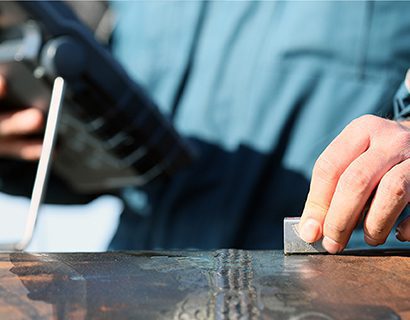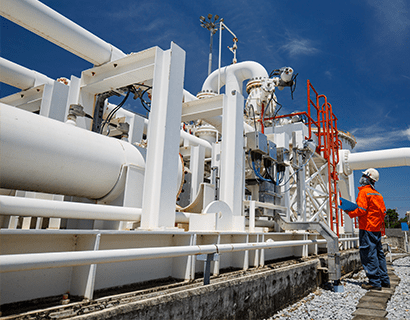C.U.P.S.
Corrosion Under Pipe Supports
In addition to our testing services, #thinkNDTi operates under the umbrella of #TAG (Think Access Group). Other divisions within the group provide specialist access solutions, making us your comprehensive destination for all inspection, testing, and repair needs. This consolidated approach not only streamlines your processes but also contributes to carbon footprint reduction and time savings. Why engage three or four separate contractors when #thinkNDTi can meet all your requirements in one place?
Corrosion Problems in pipelines
Corrosion is a formidable adversary for industrial pipelines, particularly at their support locations. Pipe supports are prone to corrosion due to factors such as moisture, chemical exposure, and mechanical stresses. Undetected corrosion can compromise the structural integrity of the supports, leading to potential catastrophic failures, leaks, and costly downtime. Therefore, the timely and accurate detection of corrosion at pipe supports is paramount for maintaining the safety and reliability of industrial pipelines.
The ultrasonic testing procedure
Want a chat?
Take me back
Ultrasonic Testing
The Ideal Tool for Corrosion Detection
Ultrasonic Testing emerges as an ideal tool for corrosion detection at pipe supports due to its ability to provide precise measurements of material thickness, locate corrosion-induced thinning, and assess the overall condition of the support structure. This non-destructive method utilises high-frequency sound waves to penetrate the material and gauge the thickness of the pipe wall and the underlying support structure. UT is particularly well-suited for this application as it can detect corrosion with a high level of accuracy, even in challenging environments.

Advantages of Using UT for Corrosion Detection at Pipe Supports
Accuracy: UT provides precise measurements of material thickness, enabling the accurate assessment of corrosion.
Non-Destructive: It is a non-destructive method, ensuring that the structural integrity of the pipe and support structure remains intact.
Real-Time Results: UT provides real-time feedback, allowing for immediate action to be taken in the event of significant corrosion.
Safety Assurance: By detecting corrosion early, UT helps prevent potential accidents and failures, enhancing overall safety.
Cost Savings: Timely corrosion detection and maintenance can result in substantial cost savings by avoiding costly repairs or replacements.

The one stop shop
#thinkNDTi are ideally placed to be your one stop shop offering more than just inspection. As part of the #TAG group, we are able to tailor packages to suit you including inspection, testing, lifting, fixing and maintaining.
Why bring in 3 or 4 contractors when with #thinkNDTi you can just choose one, saving you time and money as well as having a positive effect on your carbon footprint.

